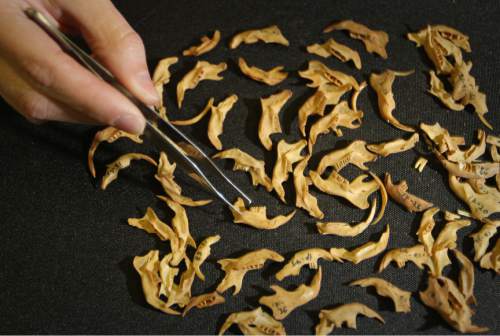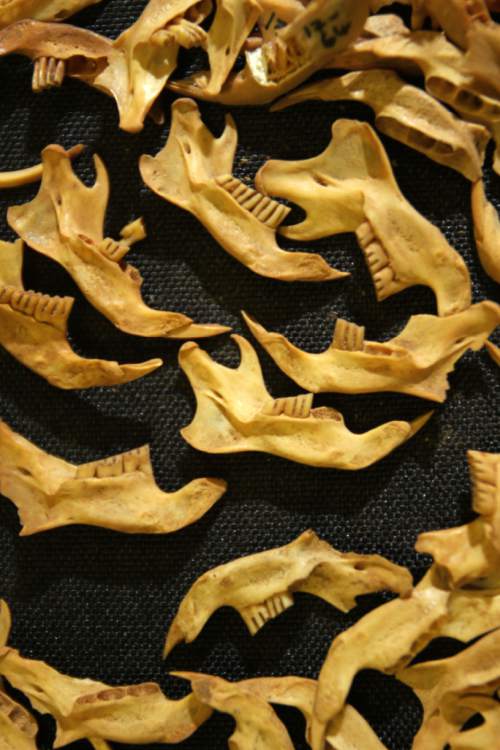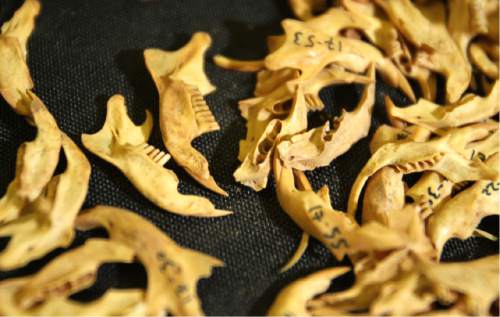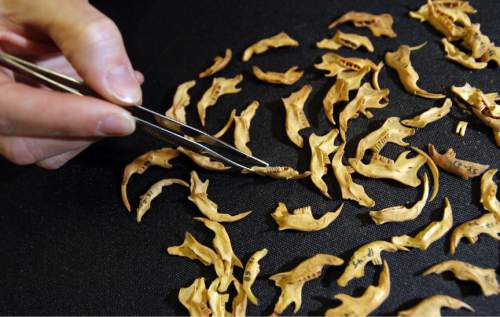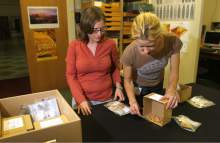This is an archived article that was published on sltrib.com in 2015, and information in the article may be outdated. It is provided only for personal research purposes and may not be reprinted.
Researchers sifting through deposits of owl pellets in Utah's Homestead Cave have discovered that small-mammal communities scurrying around the West Desert remained stable through millennia of climate change.
Species of mouse and rat came and went as habitat changed after the last ice age. But that pattern of resilience came to an abrupt end in the late 1800s, according to the research published recently in Proceedings of the National Academy of Sciences. Researchers Rebecca Rowe and Rebecca Terry documented a significant drop in mammal biomass, or "energy flow," after the arrival of Anglo settlement in the late 19th century.
"We argue the invasive grasses are the primary factor. Cheat grass is the biggest problem," Terry said. "They are causing the structure of the habitat to change from something open to something closed."
During the past century, human activity influenced ecosystems in the Great Basin, now considered one of North America's most endangered landscapes.
Terry's conclusions are the latest and perhaps most troubling findings produced from the 13,000-year record of tiny bones and hairballs nine feet deep in Box Elder County's Homestead Cave, seen as a priceless scientific resource now incorporated into an exhibit at the Natural History Museum of Utah.
"These owl pellets provide a really spectacular fossil record that allows us to track biologic changes continuously through thousands of years," said Terry, an assistant professor at Oregon State University.
The cave was incised by wave action on ancient Lake Bonneville, which started contracting about 14,000 years ago and exposed the cave. Homestead has been a roosting place for owls ever since. For thousands of years, the birds prowled the surrounding desert for furry little creatures to eat and regurgitated their bones below the roosts.
Terry's doctoral research at Stanford proved the assemblage of bones on the cave floor is an accurate proxy for the community of mammals with body weights under 500 grams.
Rowe — who was a postdoctoral student at the Utah museum — and Terry are longtime collaborators since their graduate school days at the University of Chicago.
"They are incredibly bright and good at what they have done," said Eric Rickart, the museum's curator of vertebrates. "People haven't looked at this scale of thing. They didn't think it was possible.
"We have only scratched the surface," he added. "We know changes occurring now are unprecedented."
Terry, a geologist who calls herself a paleoecologist, teamed again with Rowe to study 13,000 years' worth of cave bones stored at the Utah museum. The time frame spanned a period of rapid warming and drying some 12,000 years ago, as well as the current period of human-caused warming from greenhouse-gas emissions.
The women decided to explore Homestead bones after a resurvey of mammal life they helped conduct in Nevada's Ruby Mountains showed a steep decline in mammal biomass in the 80 years since University of California biologists first surveyed the towering Great Basin range near Elko. Terry and Rowe wanted to see if the drop was a typical response to climate change. They knew from Terry's past research that Homestead bones offered a searchlight into the deep past.
"It's the first study that lets us say what is happening today is different than in the past, when it was a natural climate change," said Rowe, an assistant professor at the University of New Hampshire.
What is different is the volume of critters on the ground is a lot less than it ever was before.
That means the landscape, now covered with cheat and other nonnative annual grasses, is not adapting to environmental changes as it has in the past. Smaller-body species that prefer eating grasses, such as harvest deer mouse and Ord's kangaroo rat, are replacing larger, shrub-affiliated species including the desert woodrat and pack rat.
Rowe is troubled that the resilience of the ecosystem seems to be compromised, but she believes the findings will help validate measures for healing landscapes.
"For conservation and management, it is important to understand when, how and why the responses of animals today differ from times of environmental change in the past," Rowe said. "The fossil record allows us to do just that."


